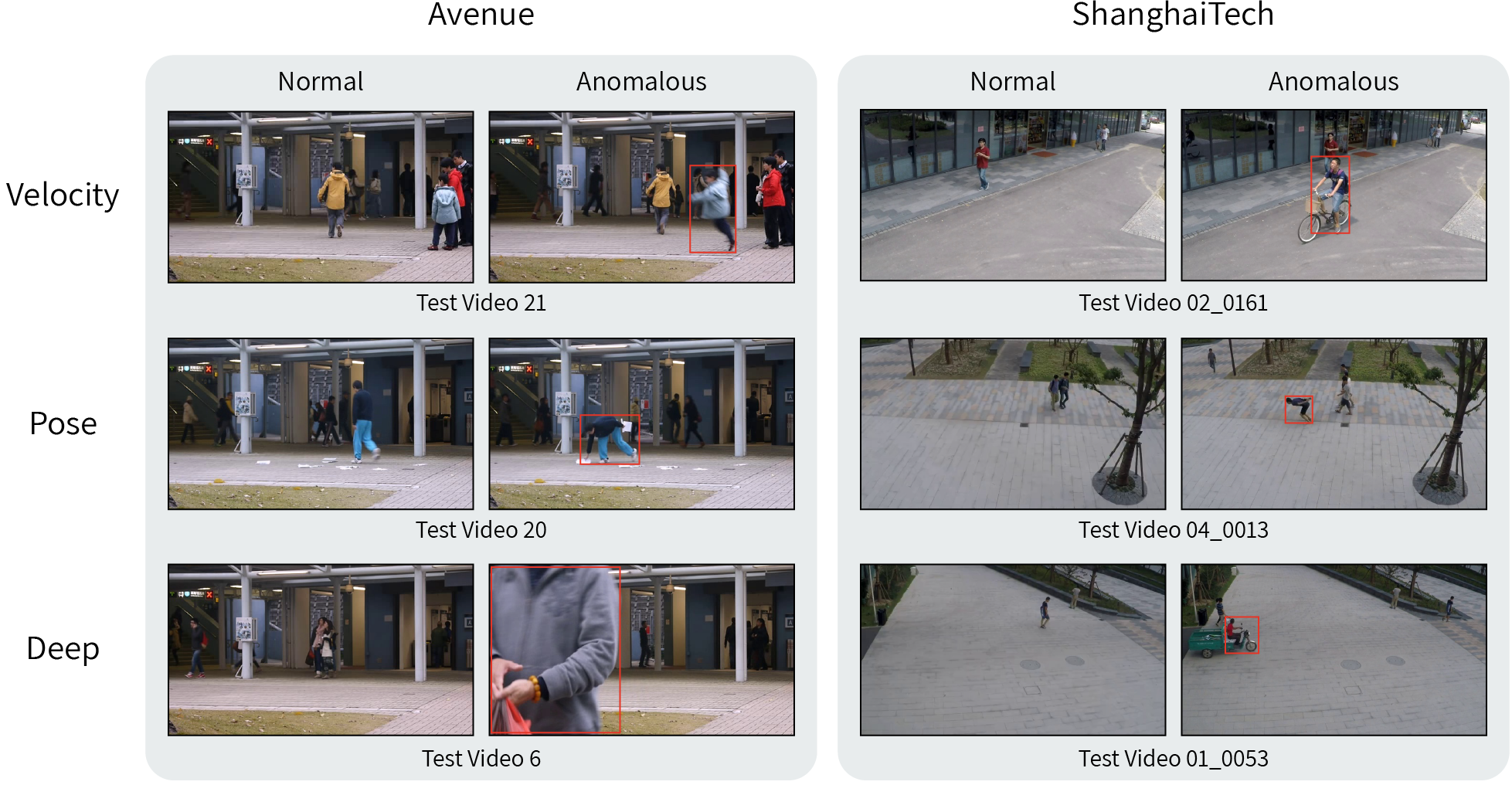Attribute-based Representations for Accurate and Interpretable Video Anomaly Detection
Video anomaly detection (VAD) is a challenging computer vision task with many practical applications. As anomalies are inherently ambiguous, it is essential for users to understand the reasoning behind a system's decision in order to determine if the rationale is sound. In this paper, we propose a simple but highly effective method that pushes the boundaries of VAD accuracy and interpretability using attribute-based representations. Our method represents every object by its velocity and pose. The anomaly scores are computed using a density-based approach. Surprisingly, we find that this simple representation is sufficient to achieve state-of-the-art performance in ShanghaiTech, the largest and most complex VAD dataset. Combining our interpretable attribute-based representations with implicit, deep representation yields state-of-the-art performance with a $99.1\%, 93.3\%$, and $85.9\%$ AUROC on Ped2, Avenue, and ShanghaiTech, respectively. Our method is accurate, interpretable, and easy to implement.
PDF Abstract








 ShanghaiTech
ShanghaiTech
 ShanghaiTech Campus
ShanghaiTech Campus
 UCSD Ped2
UCSD Ped2
